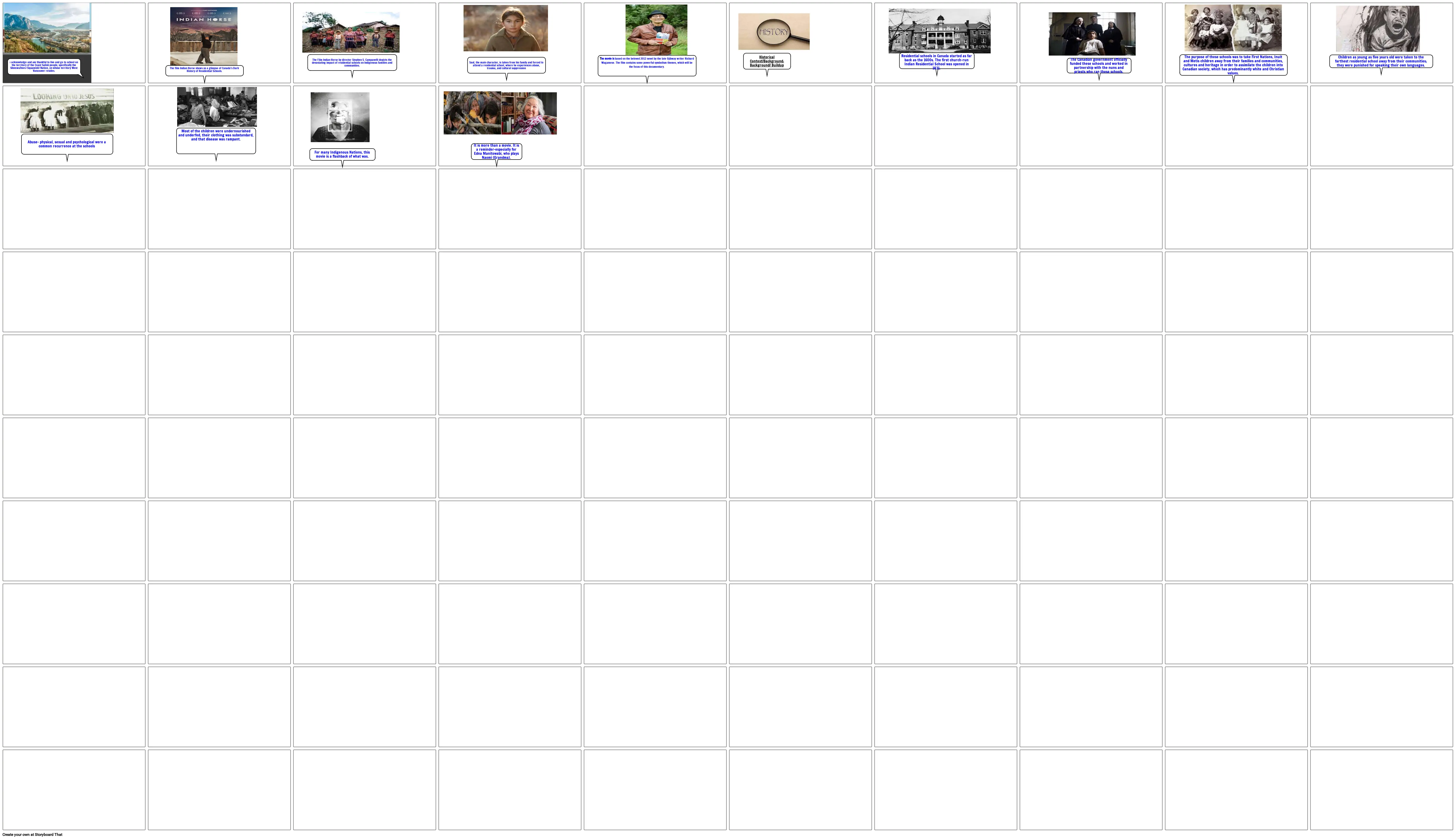Documentary indian horse

Storyboard-Text
- I acknowledge and am thankful to live and go to school on the territory of the Coast Salish people, specifically the Skwxwu7mes (Squamish) Nation, on whose territory West Vancouver resides.
- The film Indian Horse shows us a glimpse of Canada's Dark History of Residential Schools.
- Most of the children were undernourished and underfed, their clothing was substandard, and that disease was rampant.
- The Film Indian Horse by director Stephen S. Campanelli depicts the devastating impact of residential schools on Indigenous families and communities.
- Saul, the main character, is taken from his family and forced to attend a residential school, where he experiences abuse, trauma, and cultural suppression
- The movie is based on the beloved 2012 novel by the late Ojibway writer Richard Wagamese. The film contains some powerful symbolism themes, which will be the focus of this documentary.
- Historical Context/Background: Background/ Buildup
- Residential schools in Canada started as far back as the 1600s. The first church-run Indian Residential School was opened in 1831.
- The Canadian government officially funded these schools and worked in partnership with the nuns and priests who ran these schools.
- The purpose of these schools was to take First Nations, Inuit and Metis children away from their families and communities, cultures and heritage in order to assimilate the children into Canadian society, which has predominantly white and Christian values.
- Children as young as five years old were taken to the farthest residential school away from their communities; they were punished for speaking their own languages.
- Abuse- physical, sexual and psychological were a common recurrence at the schools
- For many Indigenous Nations, this movie is a flashback of what was.
- It is more than a movie. It is a reminder-especially for Edna Manitowabi, who plays Naomi (Grandma).
Über 30 Millionen erstellte Storyboards

